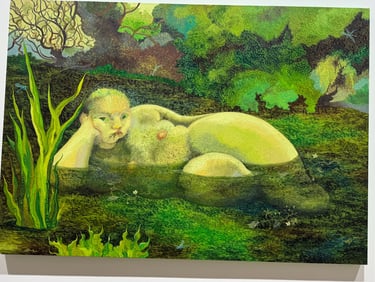Display as meaning
Exhibitions shaped how I now use elevation, suspension and light. At the Curve I saw Citra Sasmita’s installation where suspended textile and beaded hide elements, held in relation to the gallery’s pillars, created a passage read through spacing and repetition rather than text (Barbican Curve 2024). The atmosphere was ceremonial and direct. This confirmed that height, distance and light are not neutral supports but part of the content. In my installation, thin ceramic plates, fragments, sand and a measured red line are placed so that light and spacing do narrative work, not just the surfaces themselves.


At London Mithraeum, Bloomberg SPACE, the careful presentation of Roman fragments at consistent sightlines and in low, directional light models how a ground can act as knowledge. A visible join or edge reads as history, not failure, which supports my choice to keep seams legible and repairs clear (London Mithraeum 2024). The shard speaks when placement makes its curve and break readable.
Paintings by Sophie von Hellermann, with pale washes and lunar atmospheres, prompted me to lower contrast and allow soft reflection to carry mood (Pilar Corrias 2024). I now plan installations as atmospheres: a slight tilt in a plate catches window light and sets a moving shadow; a fragment sits where that shadow falls. Presentation is not an afterthought. It is part of how the work argues for time, care and residue. This remains inside the expanded drawing, where field, seam and spacing structure meaning in the room (Krauss 1979).
Cited in this section
Barbican Curve 2024; London Mithraeum 2024; Pilar Corrias 2024; Krauss 1979
monayadav.com